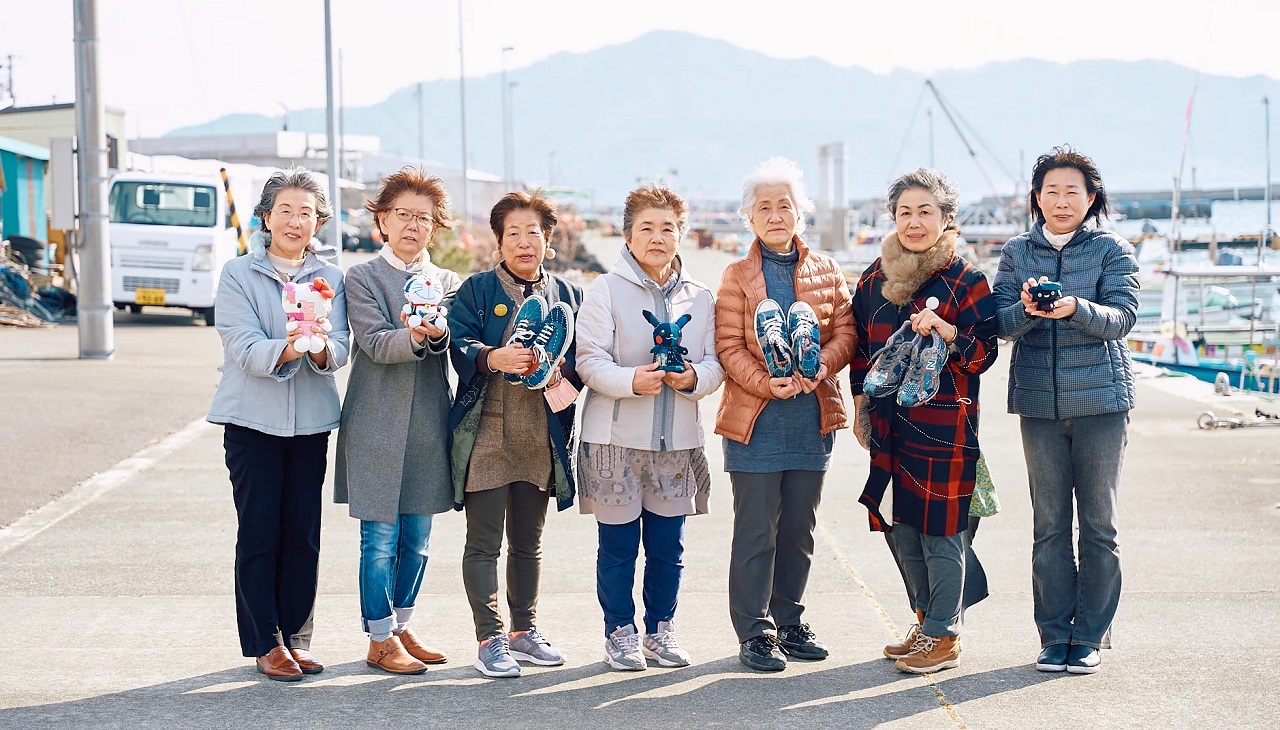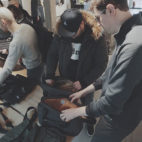How a Tsunami Revived a Global Craft Movement: The Story of Japan’s Sashiko Gals
The sea didn’t roar when it returned to silence. It simply withdrew. Like something ashamed of its own destruction. In Ōtsuchi, the coastline looked as though it had been unstitched from the land. Foundations sat bare where houses once stood. Bent guardrails ran like broken ribs along the road. The air carried salt, splinters, and the sharp kind of quiet that follows after sirens stop. Half of the city was now under water. 1284 lives lost. What drifted in wasn’t noise, but absence—of families, of work, of direction.

Among the wreckage were women left outside the machinery of reconstruction. The men who could attack the heavy labour joined the building crews. Heavy equipment arrived. Plans were drafted. But for those whose hands were trained for food, markets, factory lines, and the slow, unseen work of keeping communities alive, there was no immediate place to stand.
They started gathering not out of ambition, but instinct. In temporary housing units and borrowed community rooms they sat together with scraps of fabric and spools of leftover thread. There was no manifesto, no roadmap—just a need to anchor themselves to something. A purpose. They gathered because their hands needed to move while the rest of life stood in uncertainty.
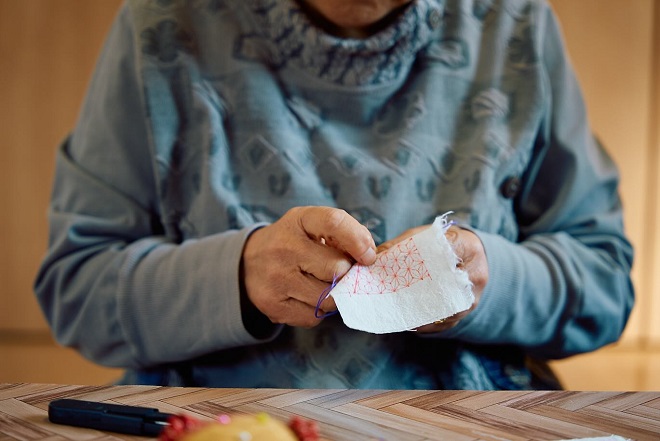
Sashiko, which translates to “little stabs,” began not as decoration but as a need for endurance. The technique emerged in the Edo period, when cotton was scarce, expensive, and too valuable to discard. Families in Japan’s northern regions learned to extend the life of garments by layering scraps of cloth—usually hemp, cotton, or linen—and binding them with rows of running stitches. It was a cousin to American quilting in spirit, though born of colder climates and harder necessity. Like kintsugi, the art of repairing broken ceramics with gold or silver, sashiko reflects a wider Japanese instinct: when something wears down, you don’t hide the damage—you reinforce it and let the repair become part of the story.
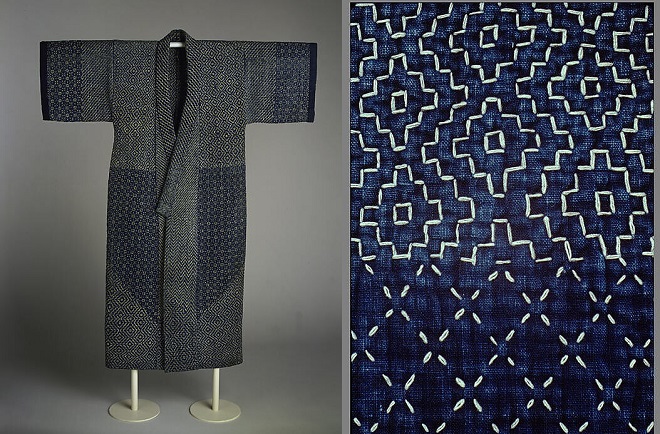
The beauty of sashiko always lay in its simplicity. A needle, thick cotton thread, and discarded cloth were enough to keep a kimono, futon cover, or work uniform alive for another season. What began as an act of frugality turned, over generations, into a language of pattern and touch—diamonds, waves, crosses, and grids stitched into an artform.
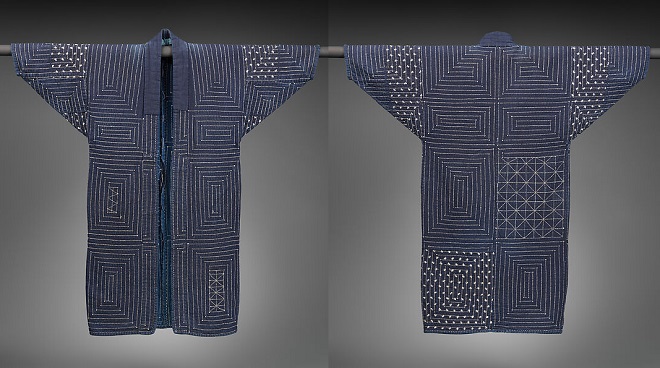
Sashiko Gals operates with a crew of 15 women whose paths crossed in the wake of the disaster. Some of them first picked up needle and thread not out of nostalgia, but through programs set up in evacuation centers to keep displaced residents occupied during long, unmoving days. Over time the circle shifted in size, growing and contracting as life demanded. Their output in those early years was humble and utilitarian: small household items, pouches, coasters, bits of clothing repaired or reimagined from whatever fabric survived the water.
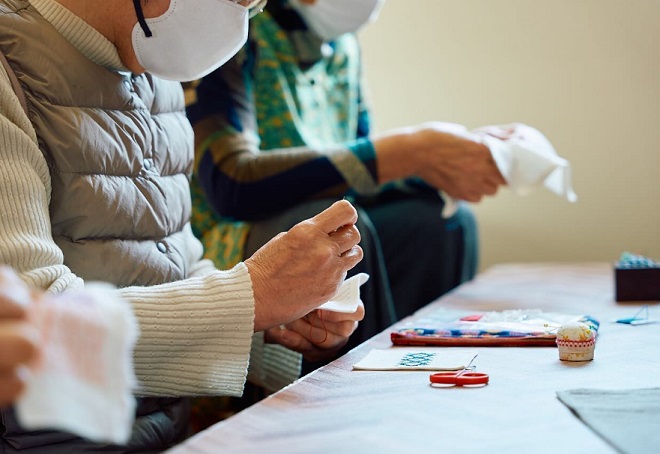
One of them, Mieko Osawa, had returned to find her home swallowed and spat back out by the sea. Photographs, furniture, fragments of memory—all steeped in mud. Later that year, when she joined a small sashiko circle forming in the community, it wasn’t out of artistic ambition. It was meditation. As she told Tokyo Weekender, “When I was stitching, I didn’t have to think about anything else, or worry about the future. I could just focus on the needle and thread.”
She wasn’t alone in that kind of refuge. Tomiko Goto, seventy-seven, said the same craft gave her something she couldn’t find in the rubble or the waiting. “Sashiko embroidery has been my greatest source of mental and emotional support. It saved me. I think everyone who loves sashiko feels the same way,” she told Tokyo Weekender.
It wasn’t long before someone noticed the consistency of what they were doing. A social worker. A volunteer. Someone who understood that rebuilding wasn’t only steel and concrete. The women were asked if they’d be willing to stitch for a community project—something that might bring purpose, maybe income, maybe simple routine. They agreed, not quite knowing what they were agreeing to.
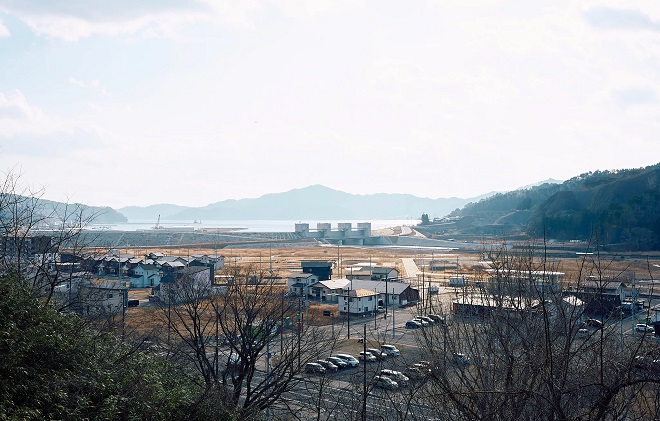
What took shape became the Ōtsuchi Recovery Sashiko Project—modest at first. The women didn’t call themselves anything. They stitched dishcloths and coasters and small textile pieces for local fairs. The work wasn’t glamorous, but it passed the hours. More women joined. Some came out of curiosity, others because they couldn’t stand idle any longer.
The spark that changed the trajectory arrived in the form of a designer: Arata Fujiwara, known for the menswear brand KUON. He didn’t see hobbyists or charity cases. He saw mastery. He saw a craft that predated fashion and outlived disaster. And he understood something else: the world outside Japan had already begun to hunger for slowness, for repair, for objects touched by human hands.
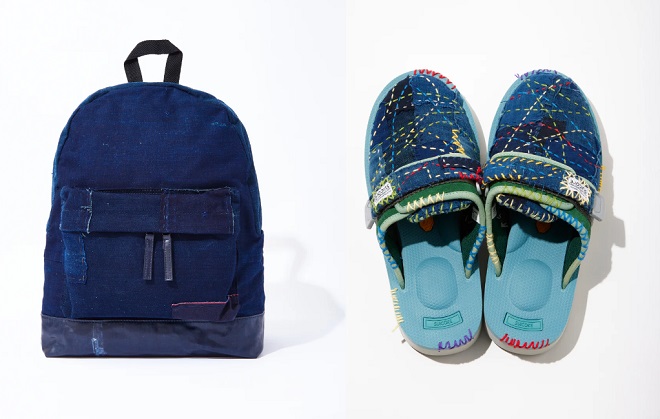
Under Fujiwara’s guidance, the women began working not just on fabric squares but on sneakers, jackets, and garments bound for galleries, boutiques, and collectors. The first time someone shipped them a pair of sneakers to transform, they hesitated. Leather didn’t yield like cotton. Rubber didn’t behave like hemp. But they learned. A single pair could take twenty, thirty hours of stitching. The shoes would return to their owners reborn: patterns of mountains, oceans, and wind rendered in thick white thread across swaths of denim and suede.
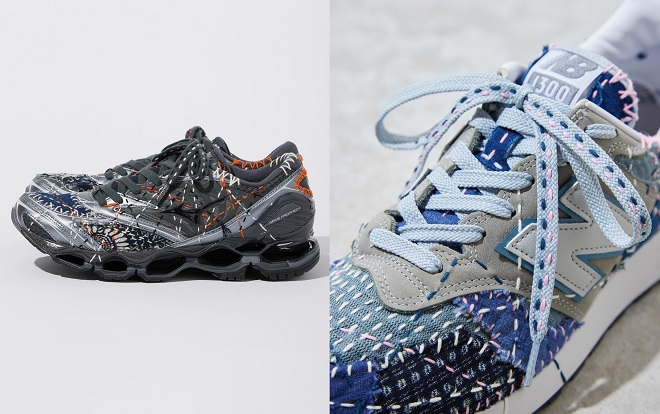
Somewhere along the line, the women started referring to themselves with a kind of shy humor. Gyaru. Gals. The word carried a playfulness, a flicker of youth revived in hands that had seen decades of work and wariness. When Fujiwara introduced them to the wider world, he called the collective Sashiko Gals. The name stuck.
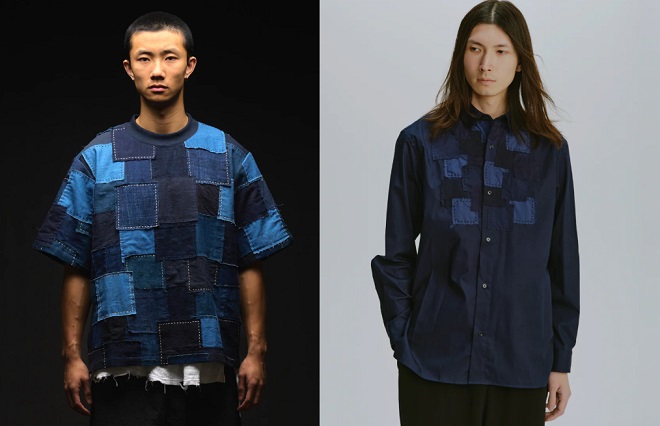
Their rise in visibility drew in collaborators from within and beyond Japan. In March 2025, they worked with C.P. Company on a capsule collection of outerwear and knitwear that reinterpreted archive pieces through layered sashiko stitching. The garments—leather jackets, field coats, washed-blue workwear silhouettes, shawl knits, and jacquard crews—were built on technical and up-cycled fabrics like Chrome-R, FLATT NYLON, CO-TED, and TAYLON P. Each piece bore visible stitching that didn’t hide the past life of the material, but rather underscored it. The collaboration capped at fifteen pieces and moved more like art edition than product drop.
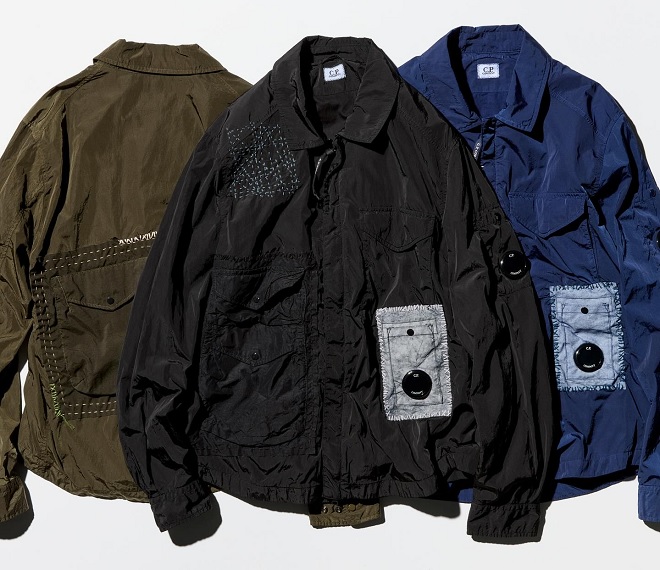
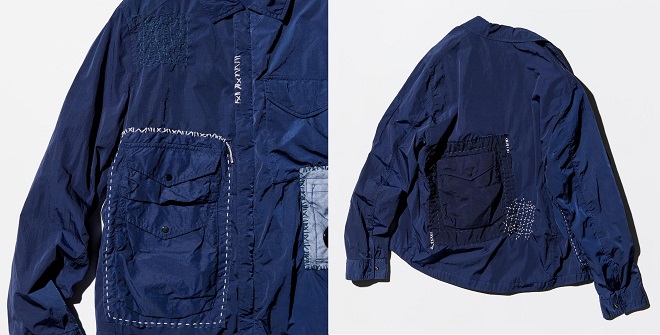
Their ongoing work with KUON follows the same logic. The brand positions the women not as embellishers but as co-makers, “reincarnating items that are no longer in use” through sashiko. Under the “Powered by Sashiko Gals” label, they’ve produced tightly released apparel: overshirts, tuxedo shirts, fedoras, and vintage patchwork vests. Some items begin around ¥22,000; others, particularly those built from historical boro textiles, reach close to ¥300,000.
Their gear collaborations don’t end there. In partnership with sneaker brands and collectors, they’ve reworked models from New Balance, VEJA, and others, applying sashiko in places that were never built for needlework. A pair might take thirty hours and travel across oceans before returning to its owner. Limited offerings have surfaced through KUON’s sneaker customization events and high-concept stockists like Dover Street Market, where only ten pairs might reach the public.
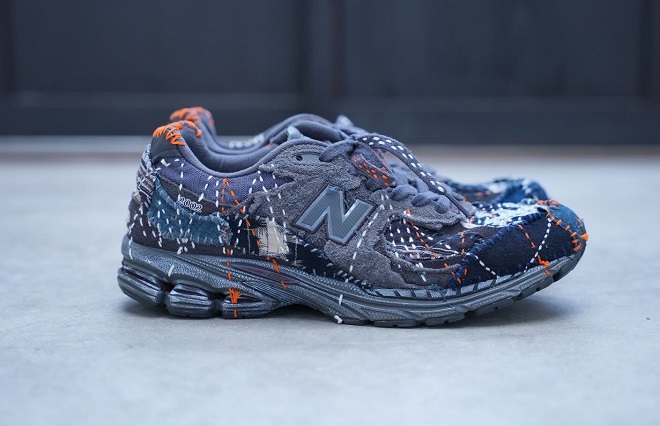
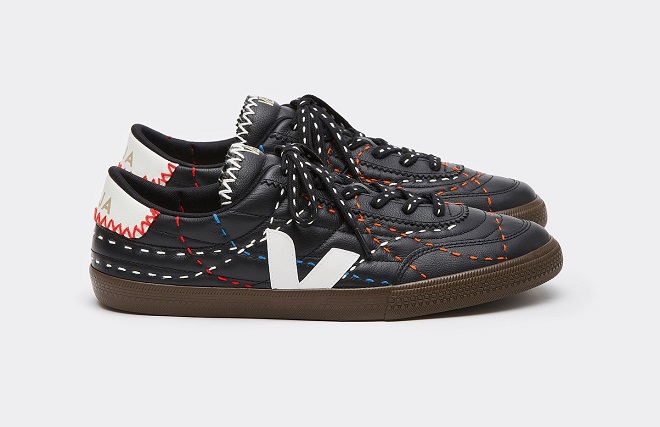
They aren’t influencers. They don’t chase exposure. Yet images of their work circulate across the worlds of menswear, craft, archival fashion, and gear culture. Collectors treat their pieces like heirlooms. Designers court them as collaborators. Young artisans study their hands for technique and philosophy.
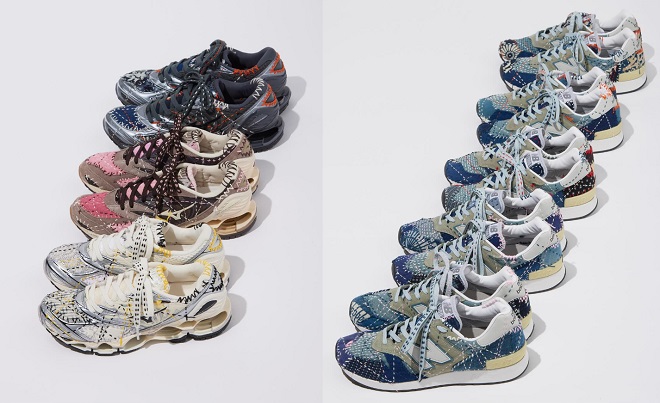
Their workshop in Ōtsuchi doesn’t look like a studio from glossy magazines. Threads scatter across tables, teacups rest half-finished, and paper patterns line the walls. The women laugh and talk as they work—about grocery prices, grandchildren, and the day the sea came. The stitching is slow, but the hours don’t drag.
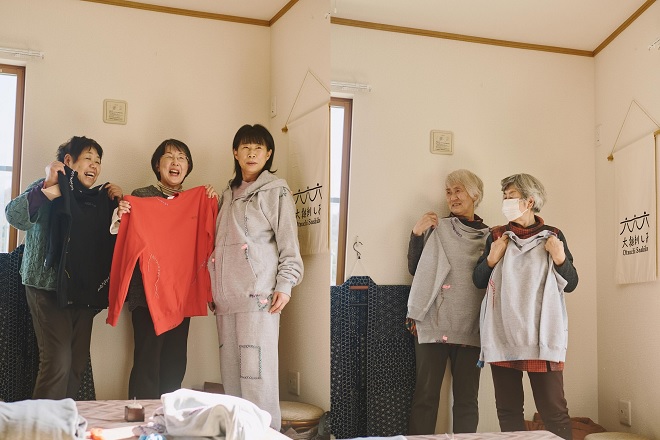
The impact of their craft is layered. Economically, it returned income to hands the job market had dismissed. Culturally, it anchored a regional identity that risked dissolving after the disaster. Emotionally, it stitched community back into existence—one loop of thread, one shared hour, one repaired object at a time.
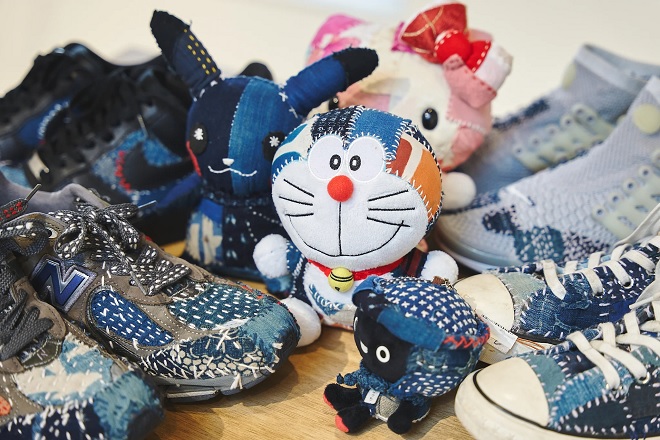
They now teach young people in the region. High schoolers learn not only how to stitch, but why. They learn that repair has its own kind of rebellion in a country where rural towns empty out and fast fashion floods landfills. The Gals don’t speak in slogans, but their work carries a philosophy older than branding: keep what can be mended, honor what has endured, leave a visible trace of your care.
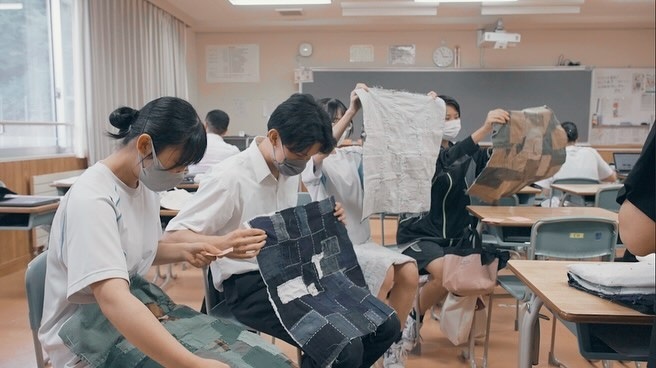
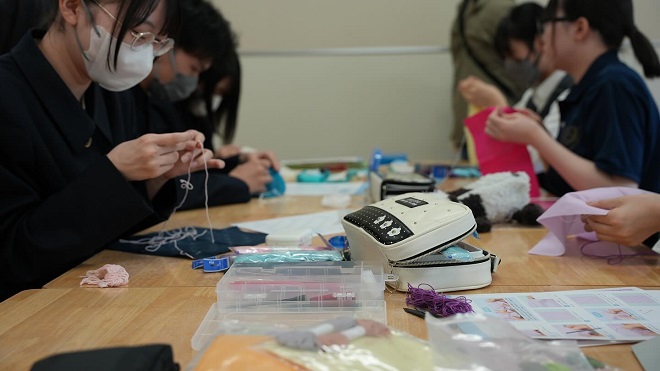
The future they imagine isn’t one of mass production. It’s one of continuity. Ōtsuchi, like many towns in Tōhoku, still fights population decline, aging demographics, and the slow fade of local industry. But there is talk—half hope, half plan—of the town becoming synonymous with sashiko the way others are with denim, knives, or woodworking. Not by chasing scale, but by cultivating excellence in the slow, quiet.
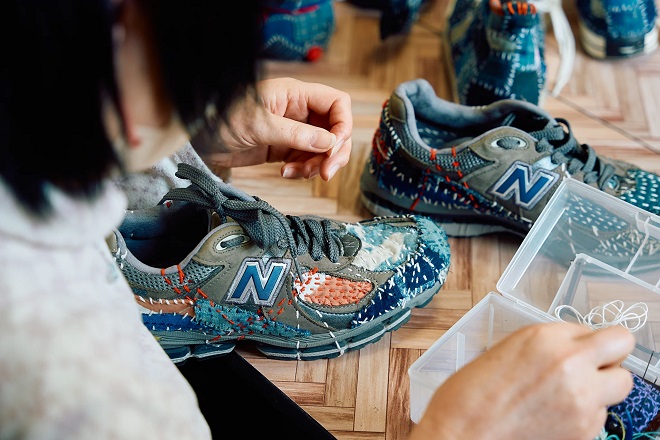
If you ask Fujiwara, he’ll tell you the work speaks louder than any campaign. If you ask the women, some will shrug and say they’re just doing what they can. Others will admit that stitching saved them from disappearing into the aftermath.
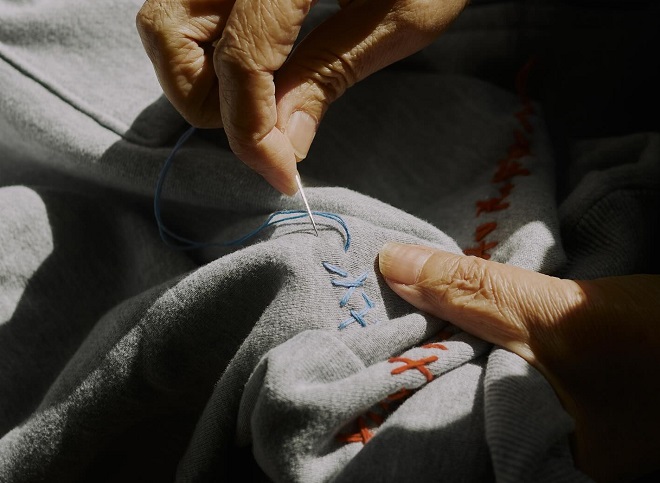
There is no epilogue to disasters like the one in 2011—only continuations. The land still bears the seams of what happened. But in a place where so much was pulled apart, a group of women took up a craft once born of cold and scarcity and turned it into something defiant. Not loud. Not fast. But steady.
They don’t mend to erase damage. They mend so the break becomes part of the pattern.





 Carry Awards
Carry Awards Insights
Insights Liking
Liking Projects
Projects Interviews
Interviews
